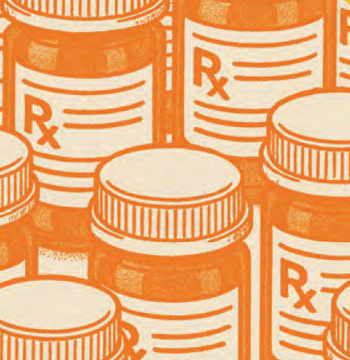
Superspreaders: The Fuel Behind the Ebola Epidemic
A new study reports that a substantial proportion of secondary cases in the 2014 to 2015 Ebola epidemic descended from a small number of superspreaders.
About 3% of the individuals infected during the 2014 to 2015 Ebola epidemic in the Sierra Leone region of Western Africa were responsible for spreading the virus to 61% of subsequent cases, highlighting the increasingly prominent concept of “superspreading,” a new
With a substantial proportion of secondary cases linked to either direct or indirect descendants of such a small number of “superspreaders,” the findings—reported last week in Proceedings of the National Academy of Sciences—stress the importance of designing public health measures to control proliferation during infectious disease outbreaks. Princeton University researchers led the study in collaboration with scientists from Oregon State University, the London School of Hygiene & Tropical Medicine, the International Federation of Red Cross and Red Crescent Societies, the Imperial College London, and the National Institutes of Health.
Only a few superspreaders maintained or fueled the Ebola epidemic at later stages. “Without those superspreaders, the epidemic might have stopped much earlier,” Max Lau, PhD, the study’s lead author and a postdoctoral research associate at Princeton University, told Contagion®.
By designing a mathematical model charting multiplication of the virus within the community, researchers were able to highlight the most plausible chain of transmission—a process that can be useful in identifying superspreaders.
People at both ends of the age spectrum—young and old—are more likely to be superspreaders. These two high-risk age groups tend to have more visitors and caregivers during an illness, so future intervention strategies may focus on reducing infectious contact between them and others.
“Our study shows that data on where and when cases of a disease occur can be used to track superspreading,” Benjamin Dalziel, PhD, an assistant professor of integrative biology and mathematics at Oregon State University, told Contagion®.
He continued, “Looking for superspreading early in an epidemic, and asking what are the characteristics of superspreaders, might help us target public health interventions and slow disease spread. Open access to disease incidence data in real-time could aid in identifying superspreading early on, by connecting researchers with what’s happening ‘on the ground.’”
Superspreading also was a key driver of the severe acute respiratory syndrome (SARS) outbreak in 2003 and the more recent Middle East respiratory syndrome (MERS) outbreaks, starting in 2012, according to the study.
The new
For each patient observed, researchers were able to assign a probability to each previous patient who had infected them; they based these probabilities on disease timing and geographical proximity.
With these probabilities, they created tentative transmission networks and evaluated how likely someone was to be a superspreader or not, Dr. Funk explained.
“By then tracing back how many cases were found to have been either directly or indirectly infected by a superspreader, we were able to assess the proportion of cases ultimately linked to super-spreading events,” he said.
The authors acknowledged limitations of the study’s results, citing the omission of hospitalized cases and the underreporting of some community cases, which could have led them to underestimate the degree of superspreading.
Nonetheless, isolation is key in curtailing Ebola, and limiting contact with others during the infectious period prevents transmission, Amanda McClelland, senior officer of public health in emergencies at the International Federation of Red Cross in Geneva, Switzerland, told Contagion®.
“My advice to infectious disease specialists is to address outbreaks through a holistic lens and work with multidisciplinary teams and the affected communities to address the dynamics of transmission, including the social and cultural dynamics,” she concluded.
Susan Kreimer, MS, is a medical journalist who has written articles about infectious diseases and many other health topics. For two decades, her coverage has informed consumers, physicians, nurses and health system executives. Raised in the Chicago area, she holds a master’s degree in journalism from Columbia University and lives in New York City.
Newsletter
Stay ahead of emerging infectious disease threats with expert insights and breaking research. Subscribe now to get updates delivered straight to your inbox.



























































































































































































































































































































